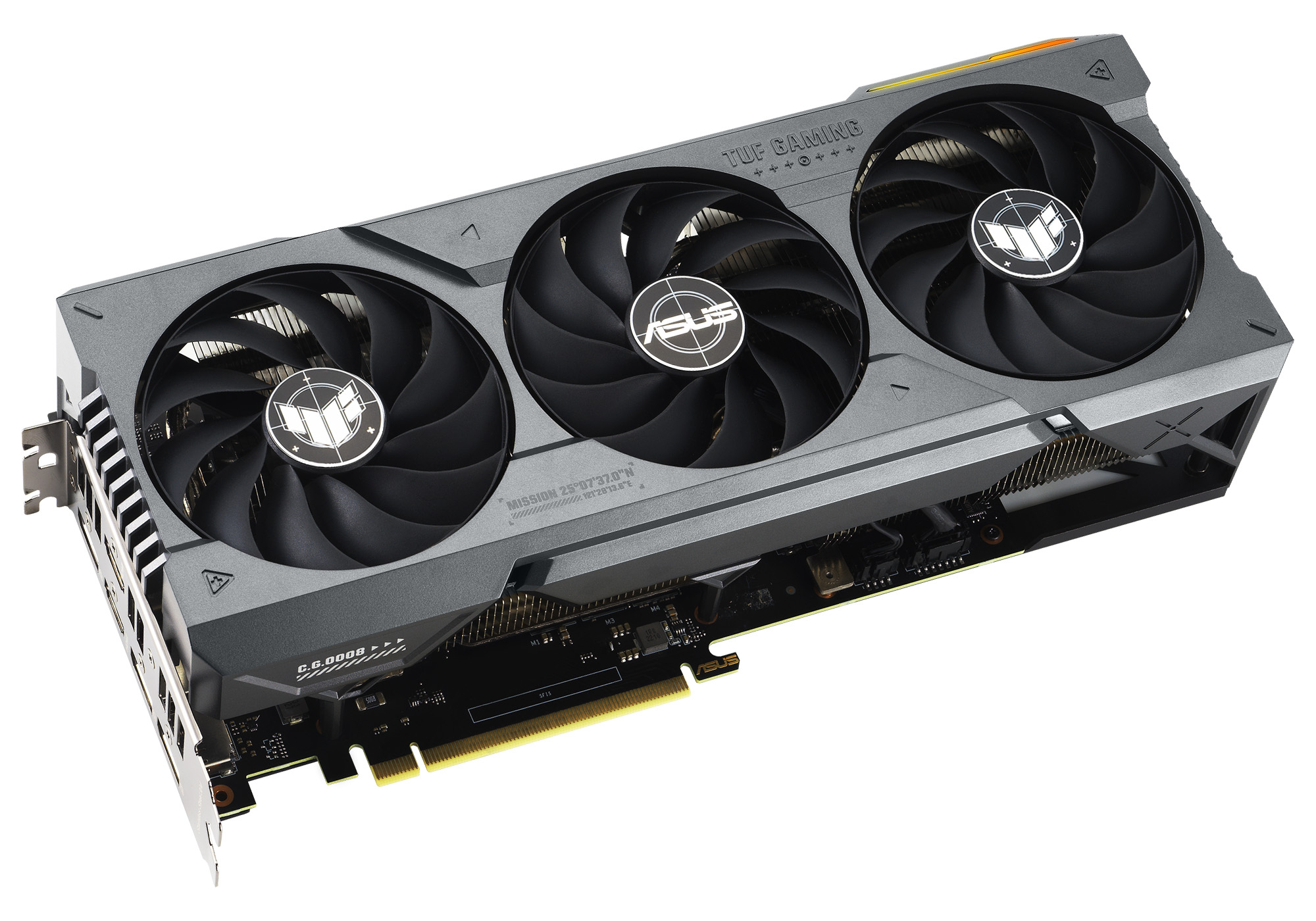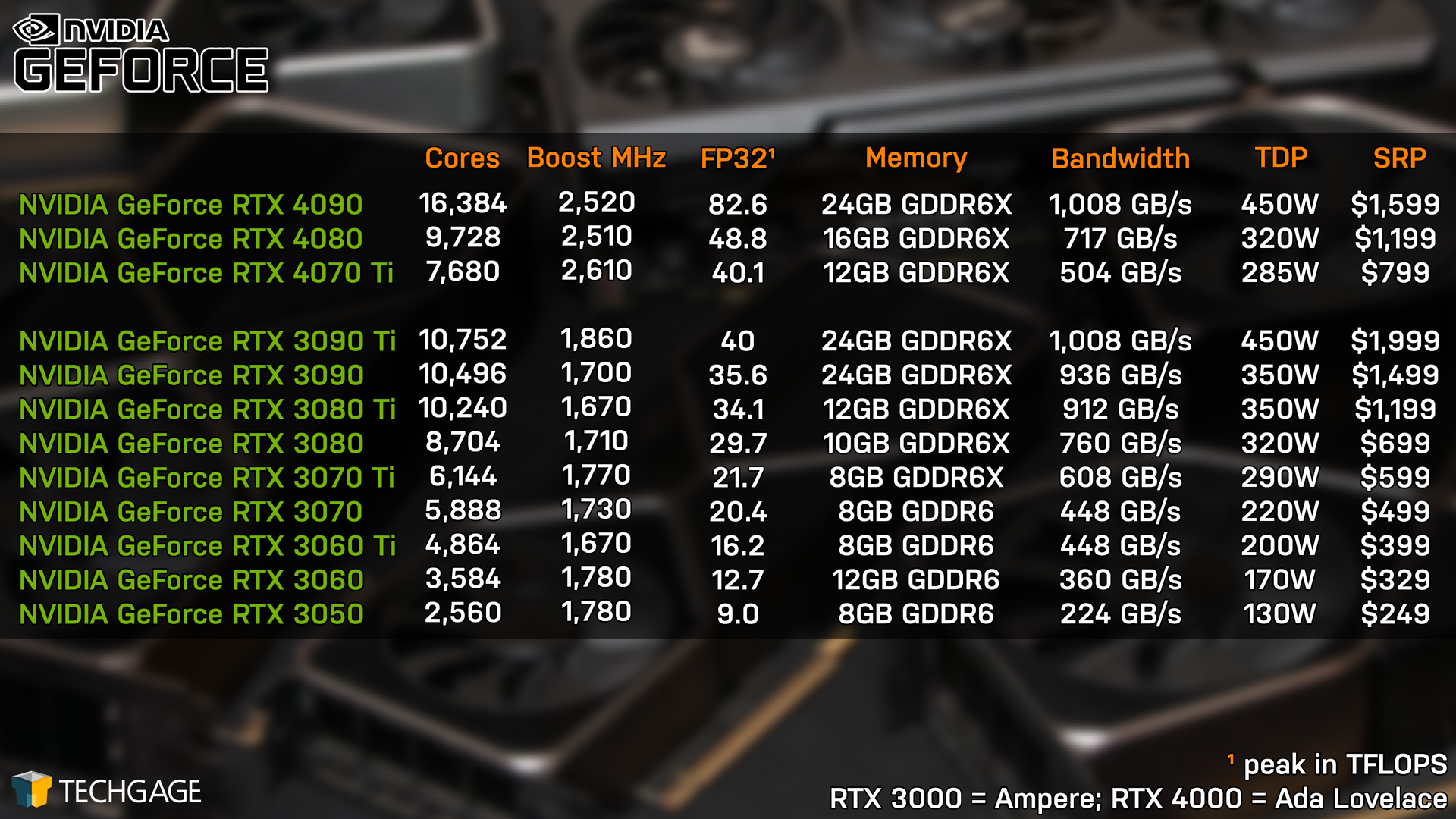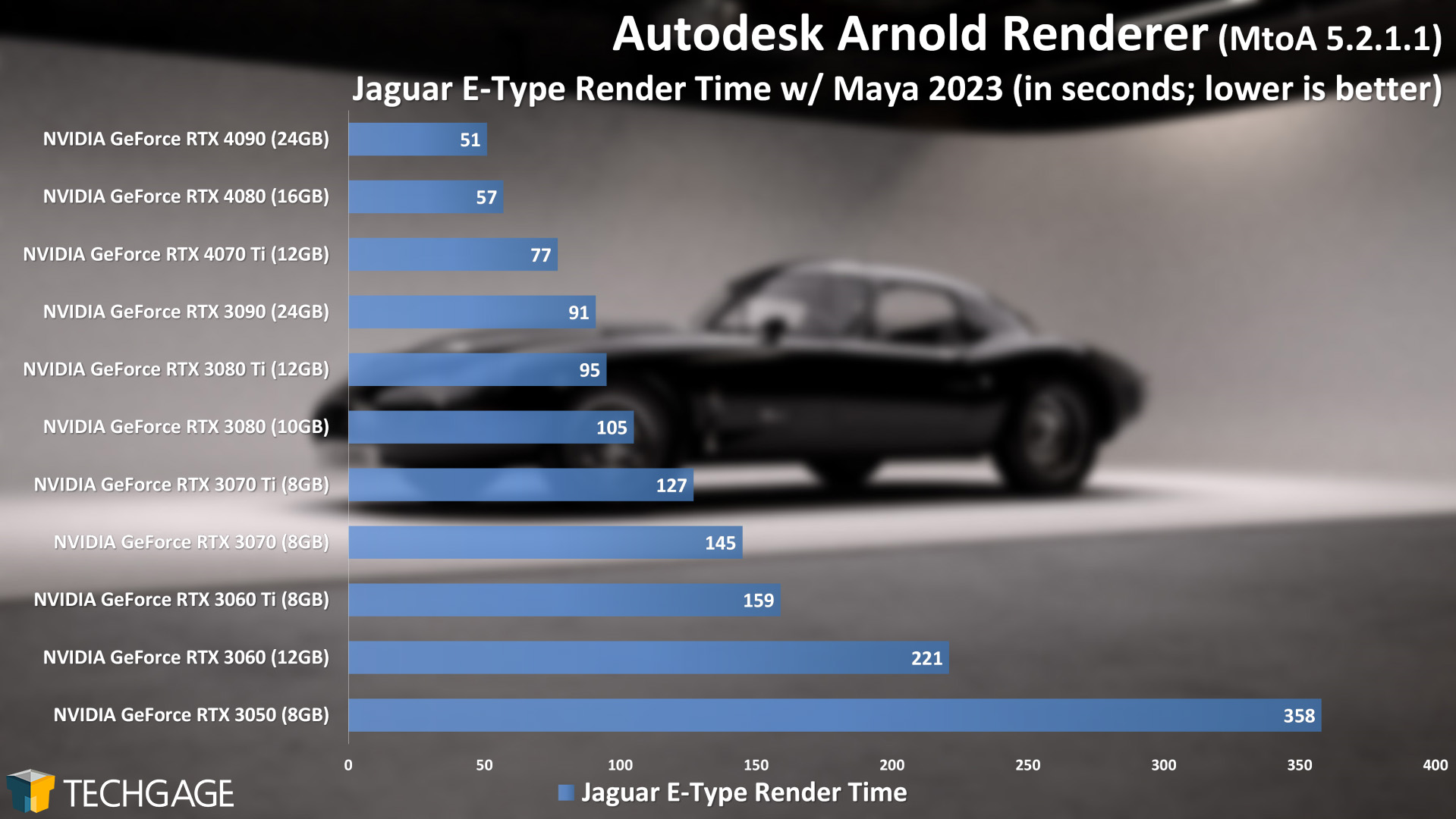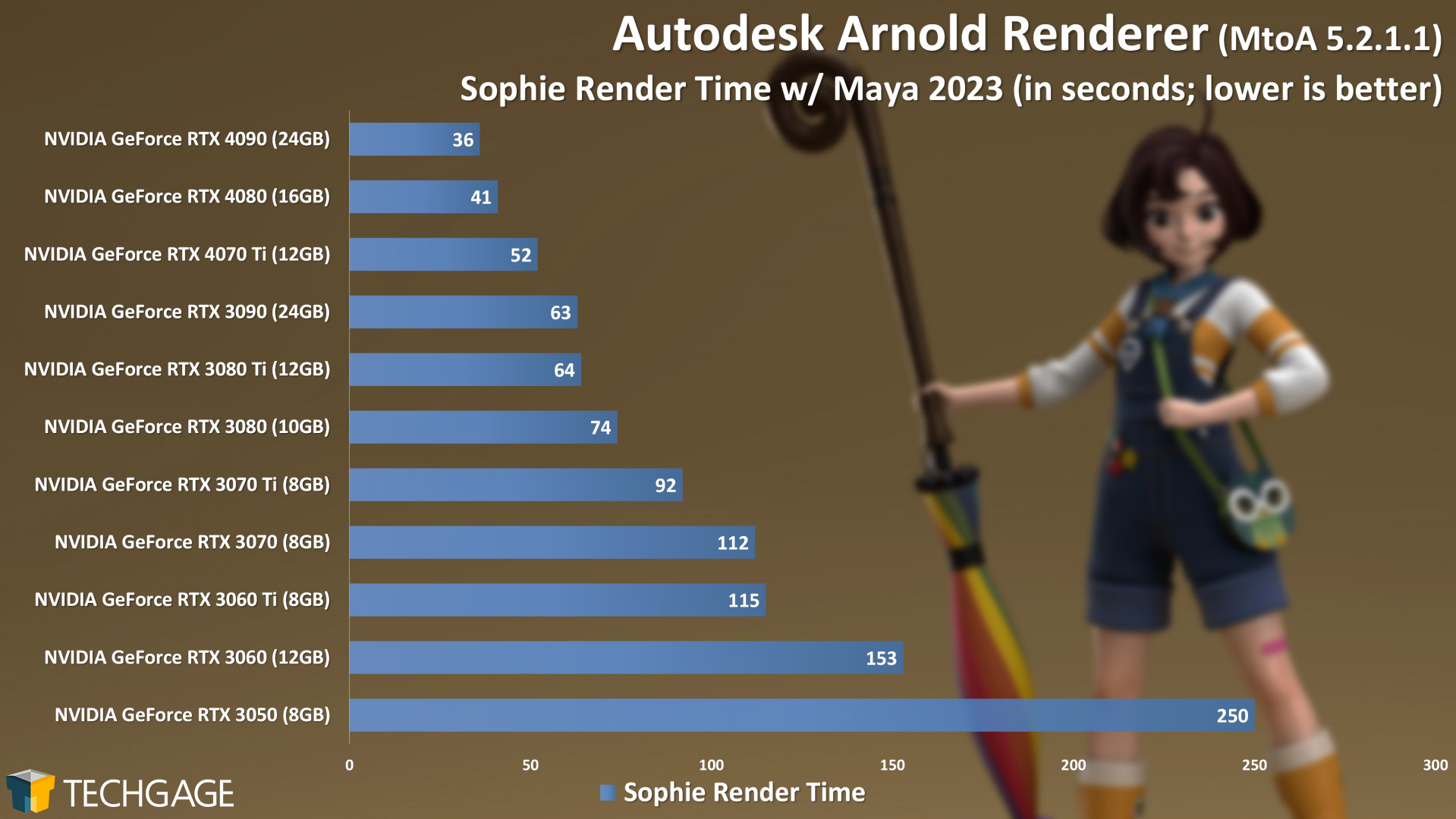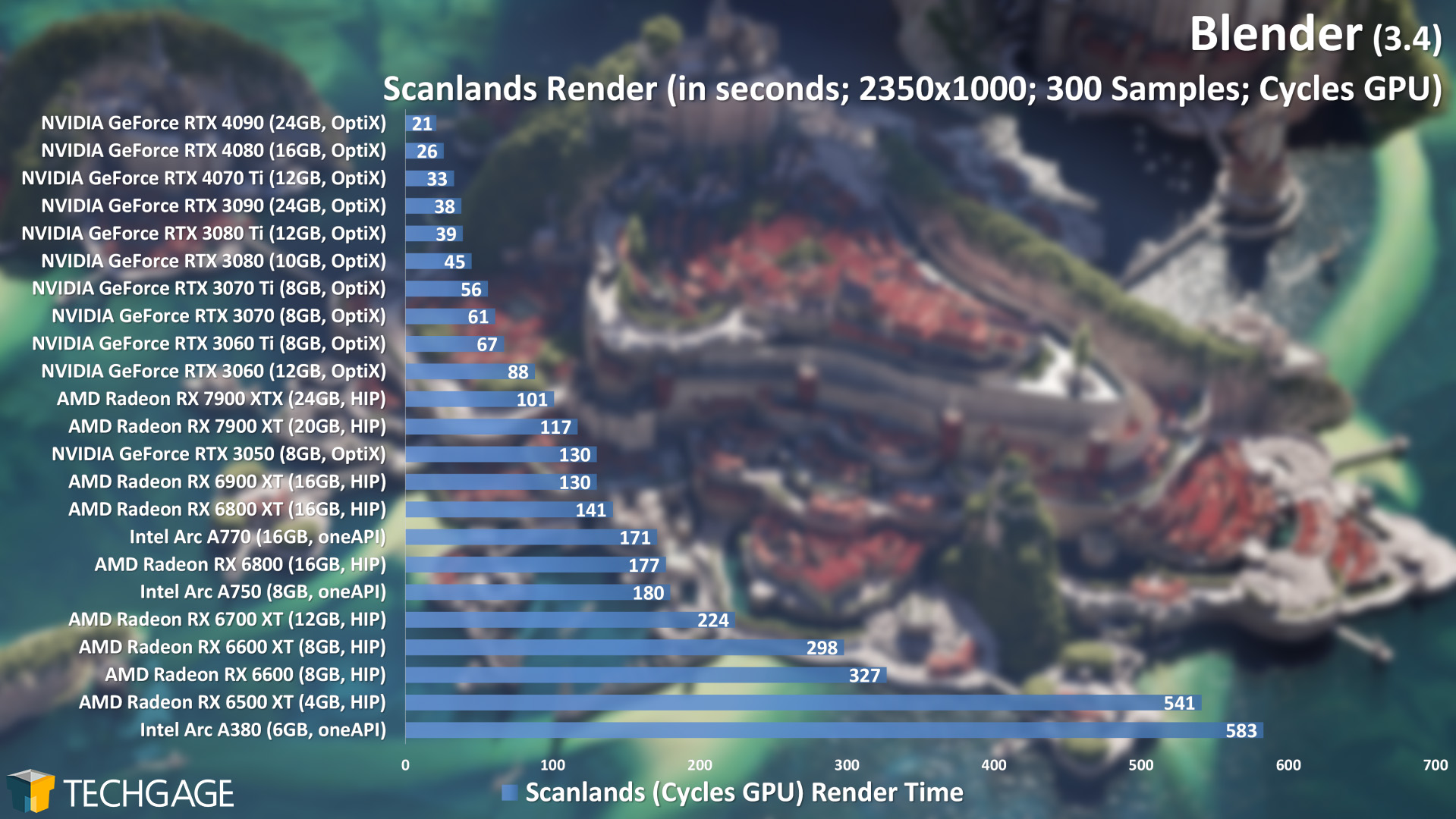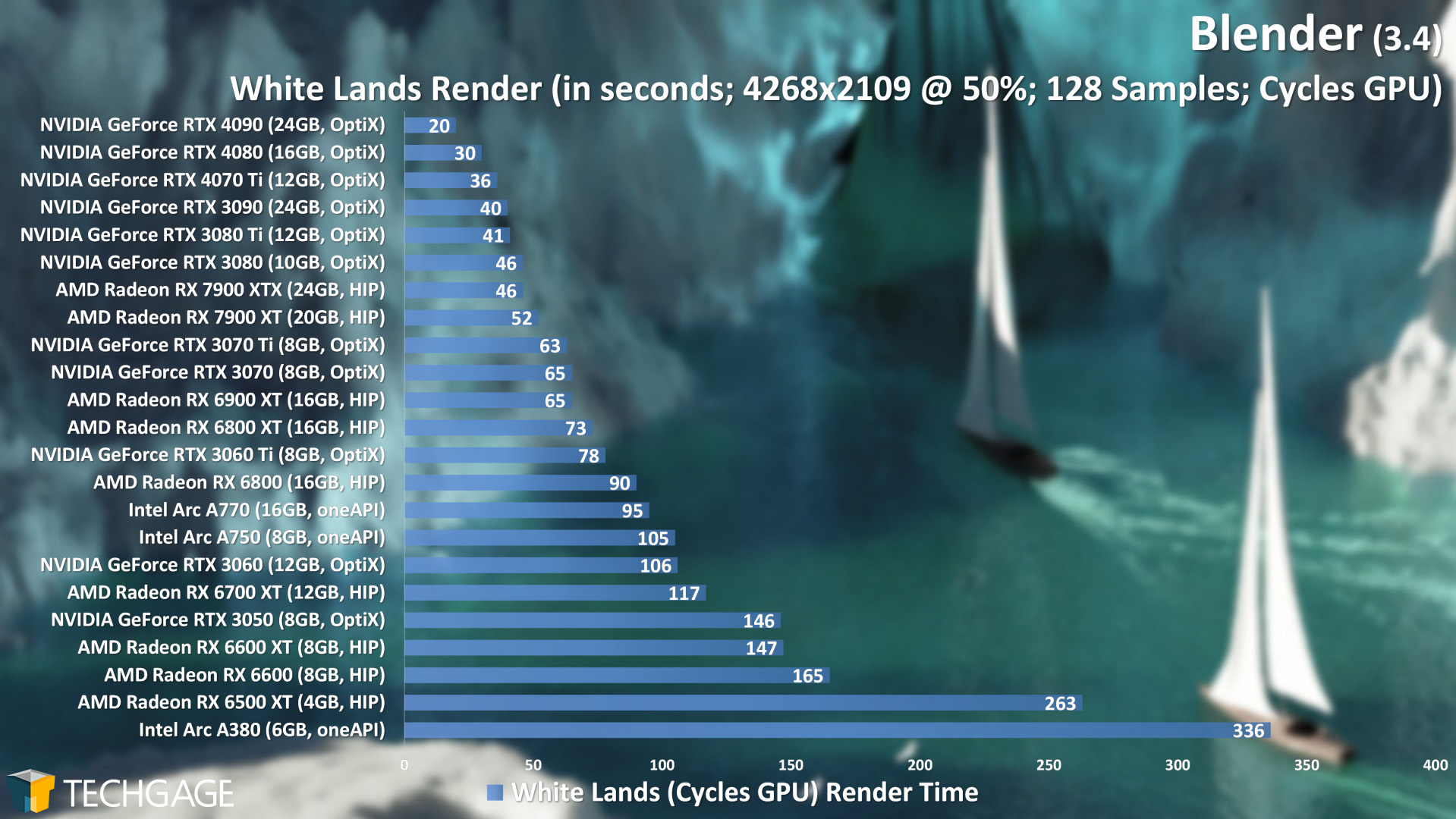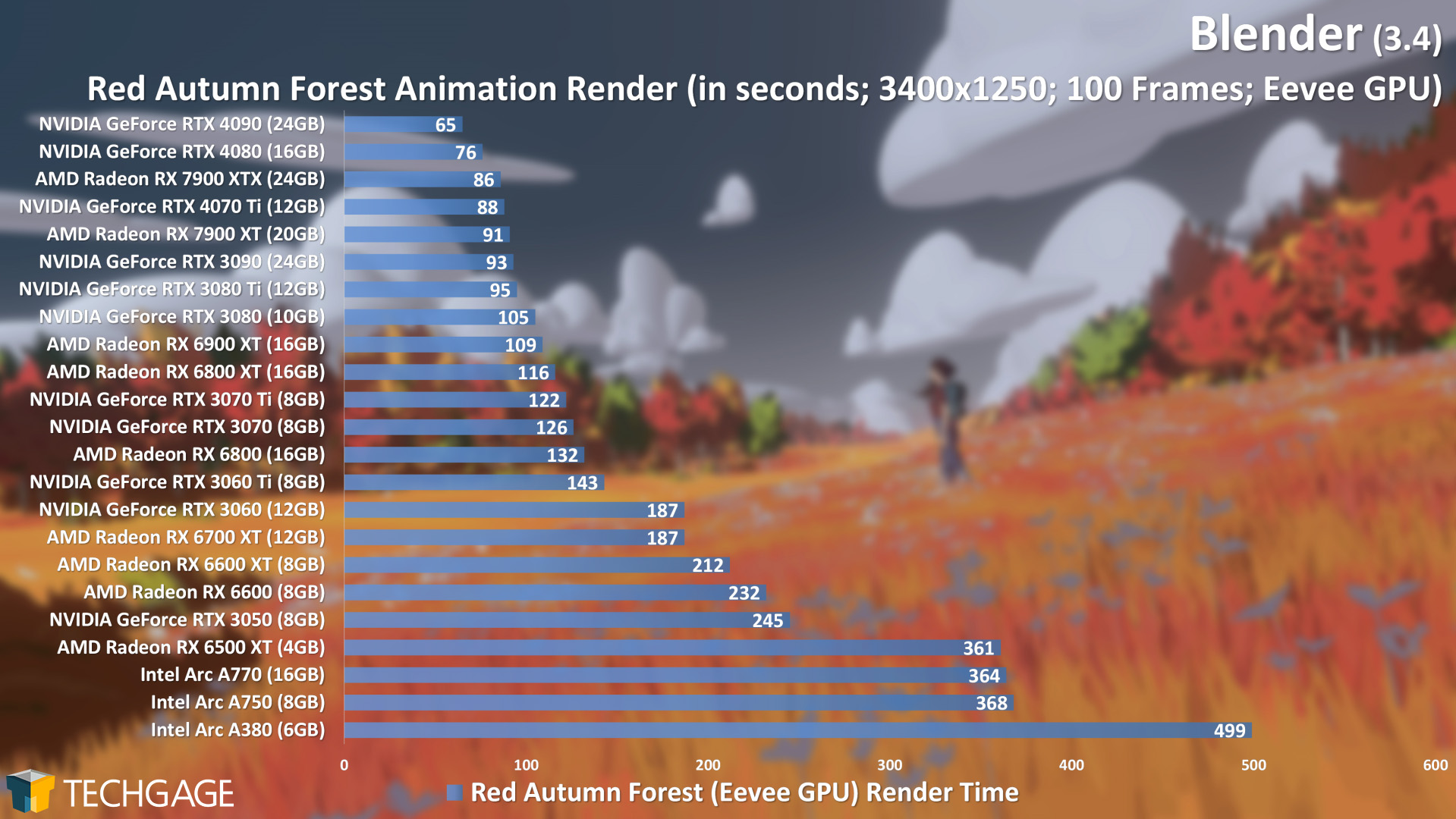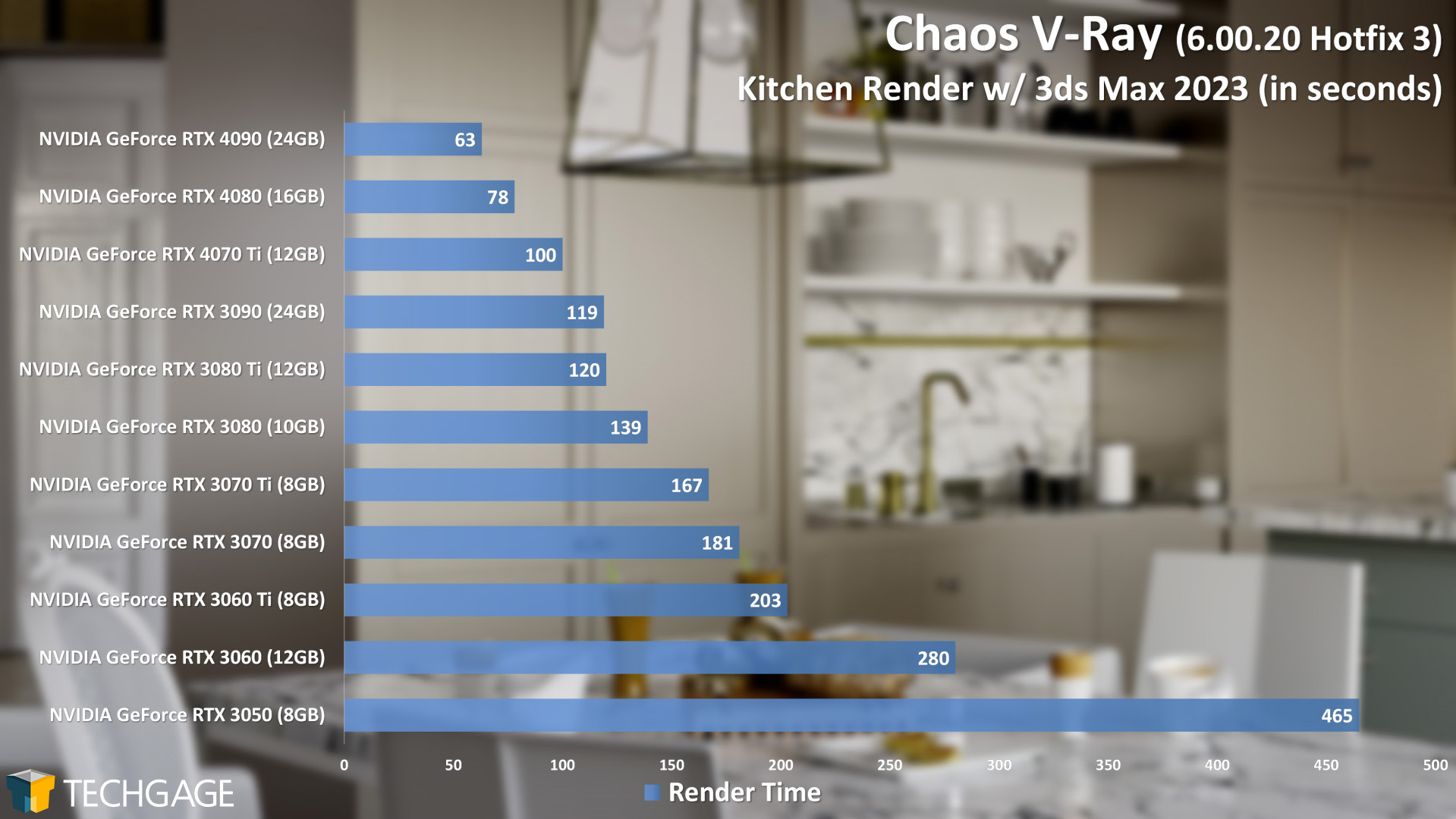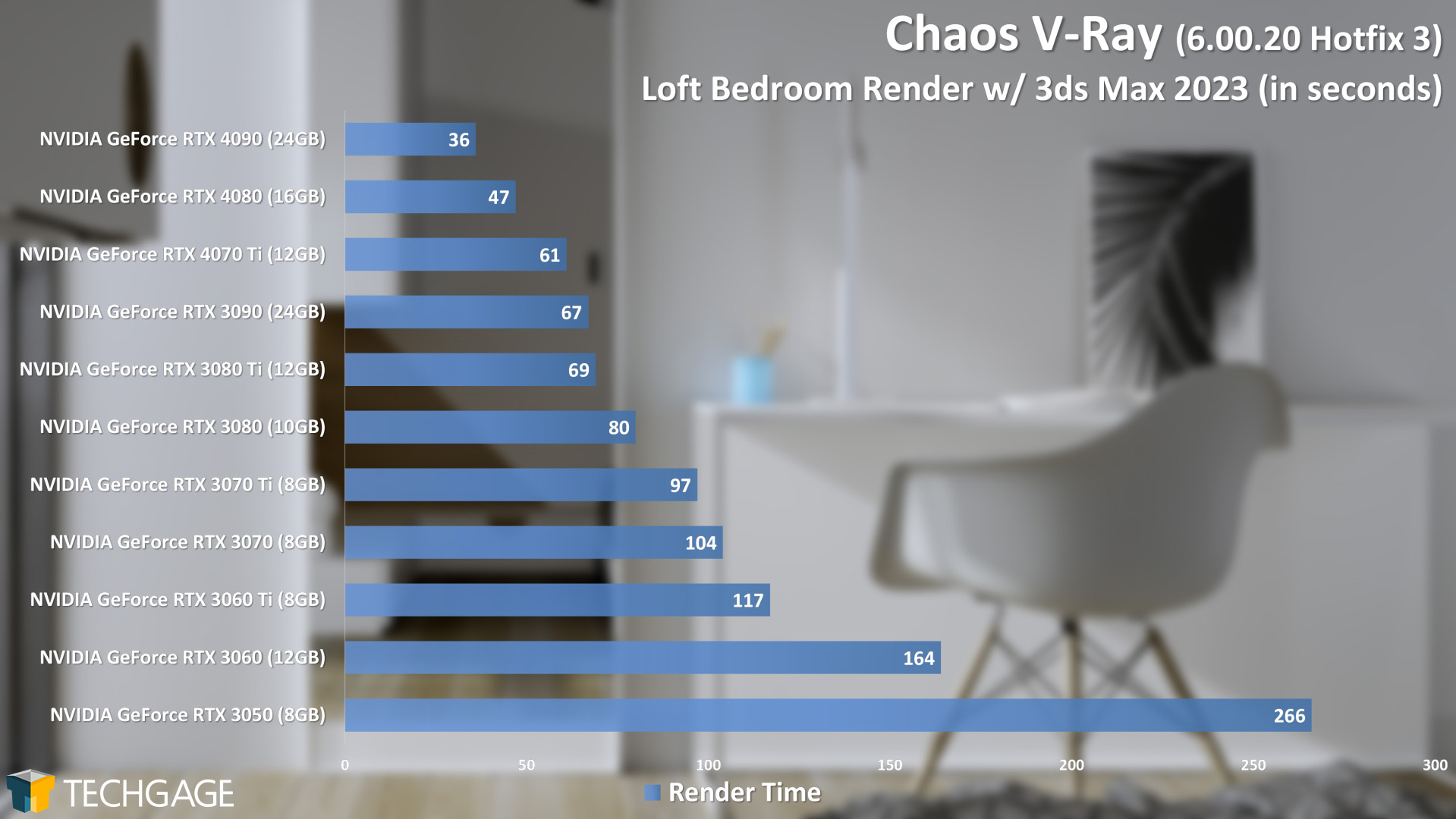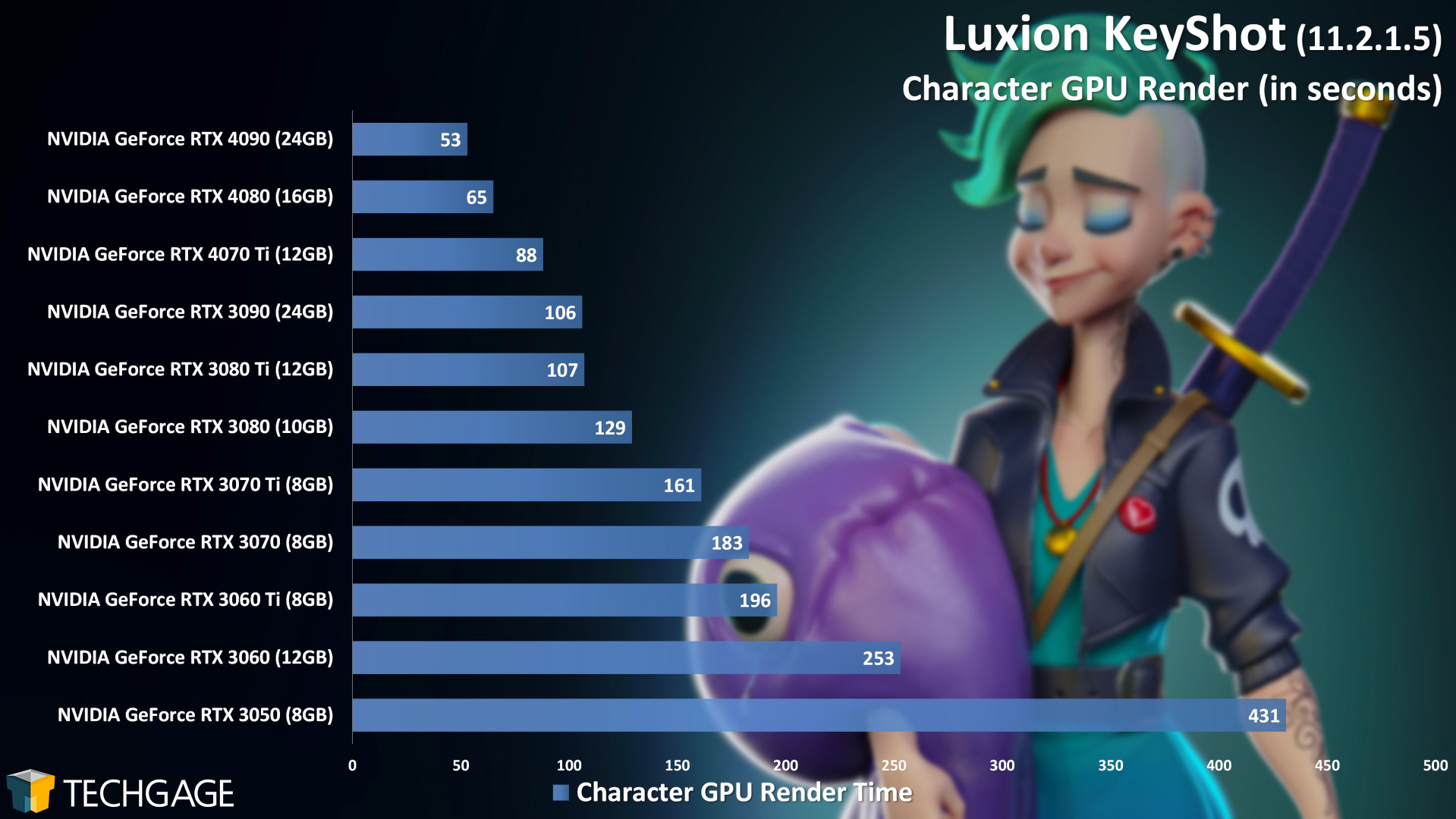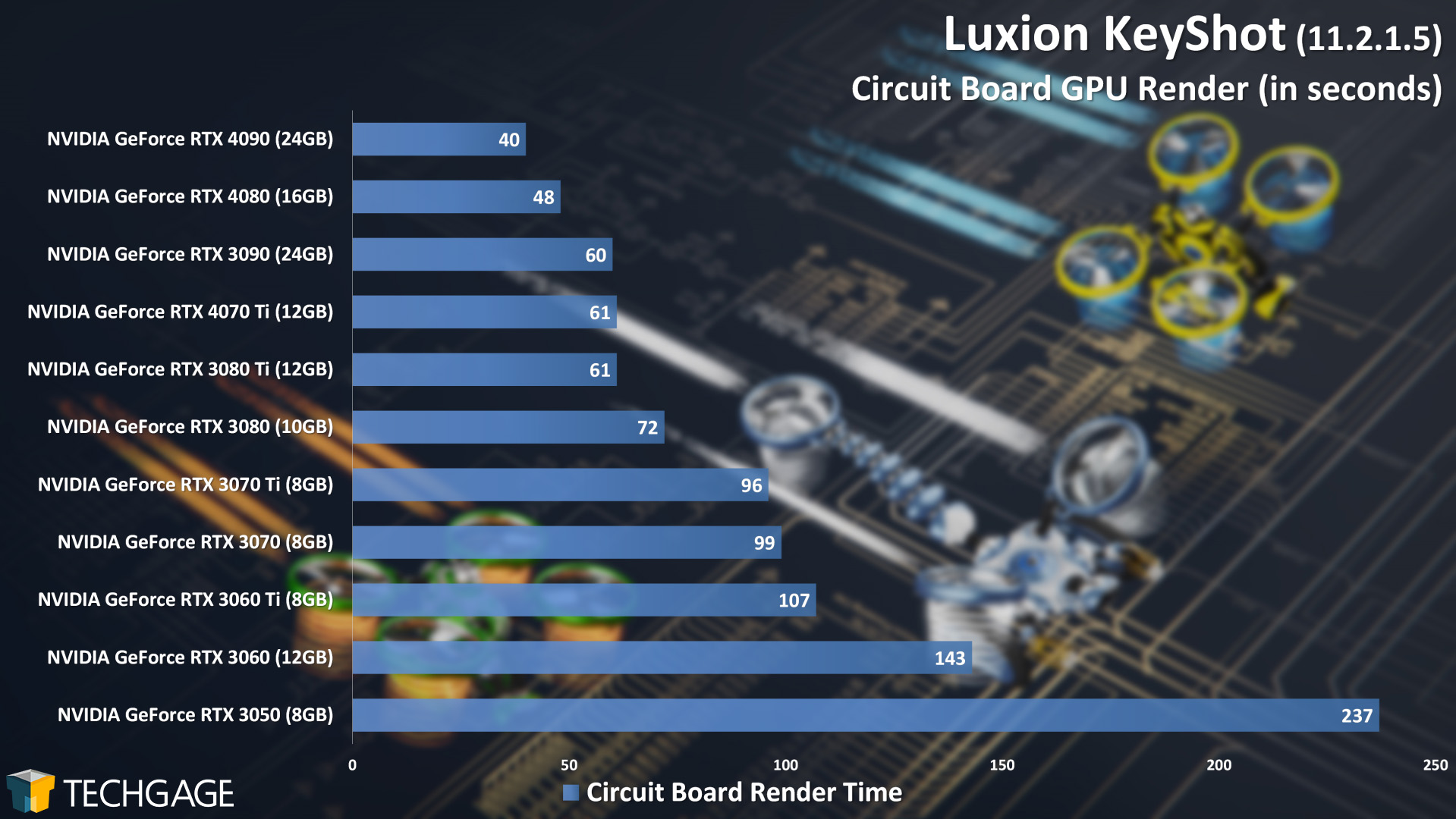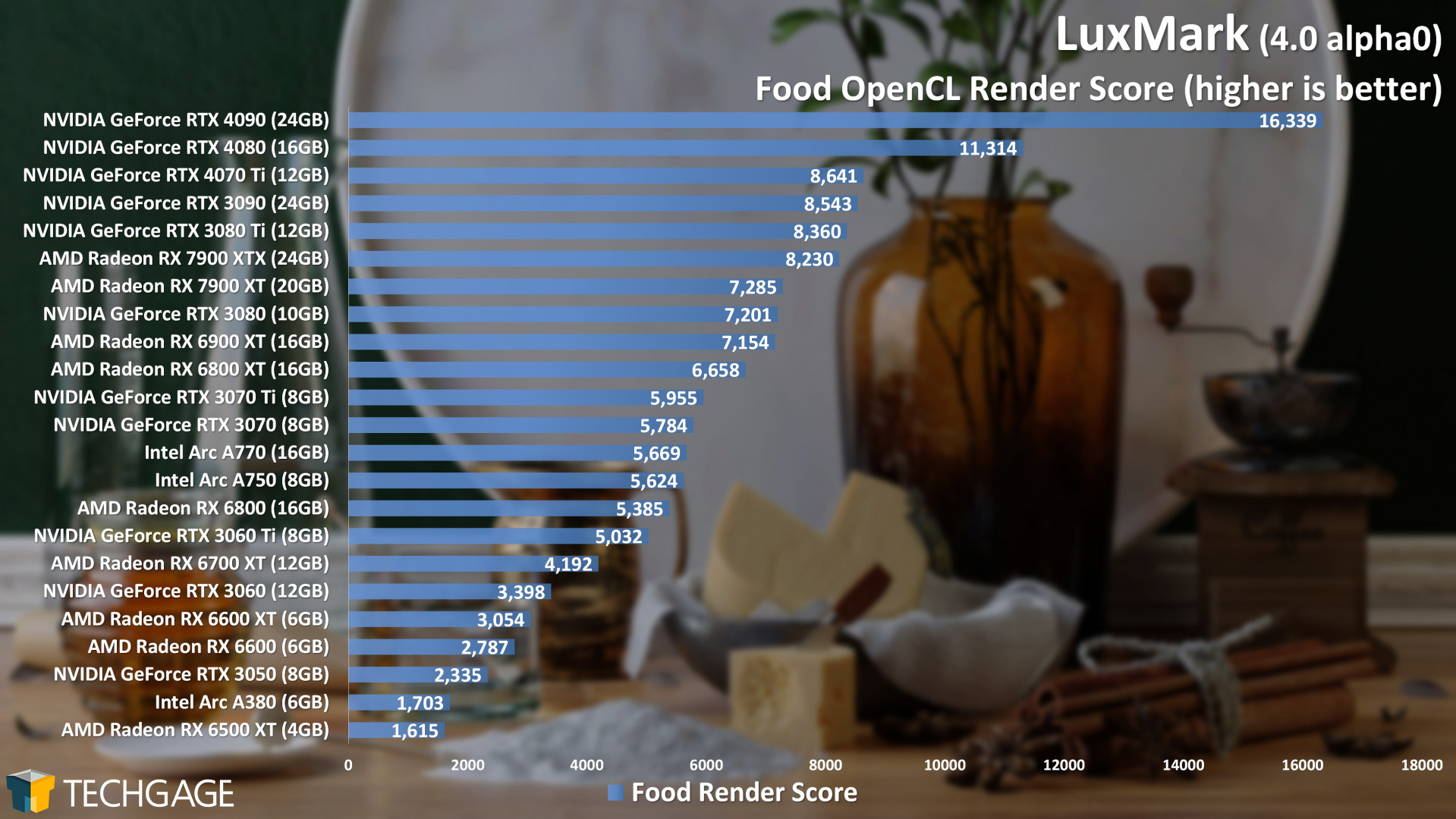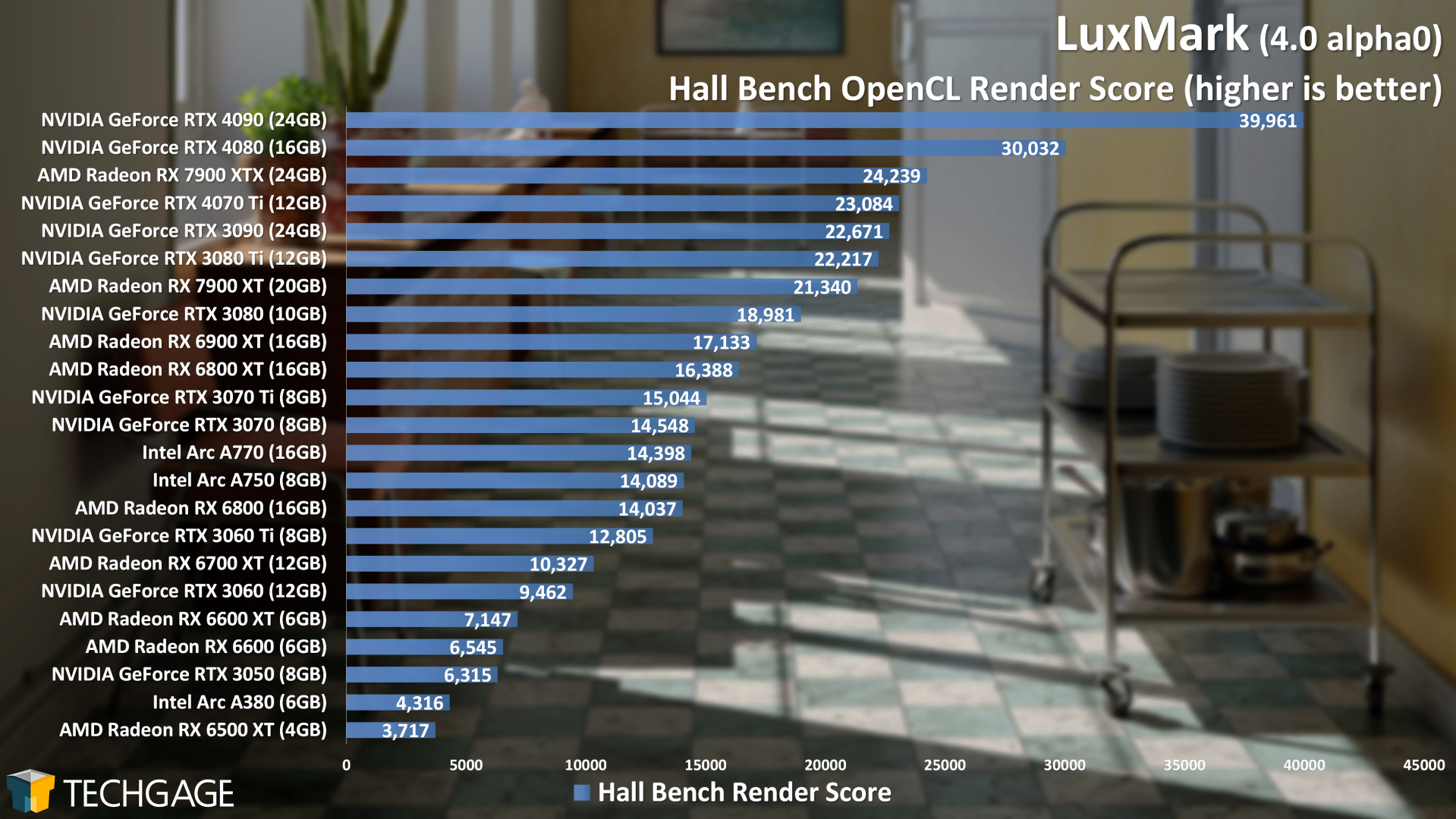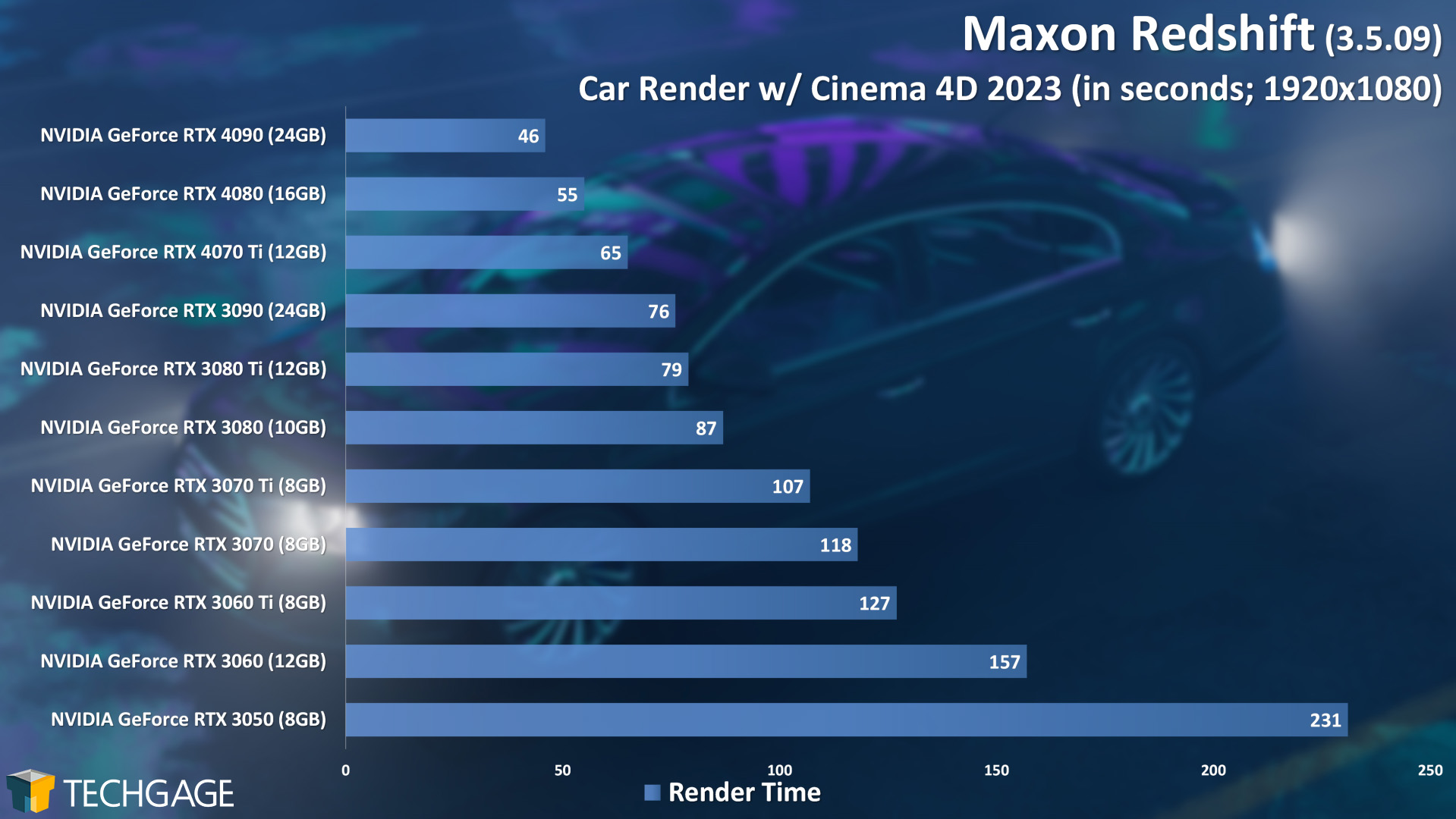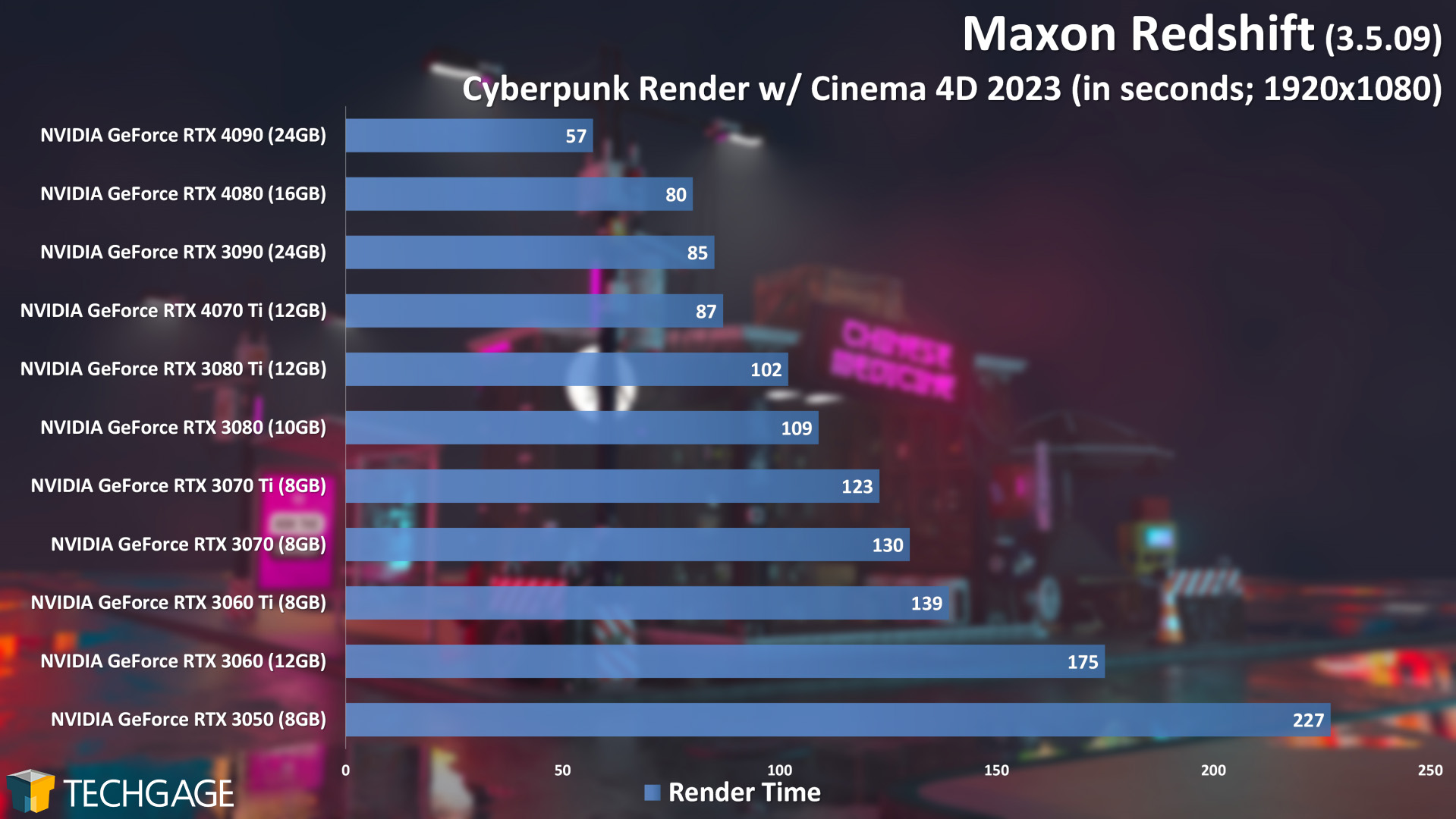- Qualcomm Launches Snapdragon 4 Gen 2 Mobile Platform
- AMD Launches Ryzen PRO 7000 Series Mobile & Desktop Platform
- Intel Launches Sleek Single-Slot Arc Pro A60 Workstation Graphics Card
- NVIDIA Announces Latest Ada Lovelace Additions: GeForce RTX 4060 Ti & RTX 4060
- Maxon Redshift With AMD Radeon GPU Rendering Support Now Available
NVIDIA GeForce RTX 4070 Ti 12GB Creator Review
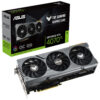
NVIDIA’s third Ada Lovelace-based GeForce has landed: RTX 4070 Ti. This artist formerly known as RTX 4080 packs in 12GB of memory, effectively delivering a 50% boost to VRAM gen-over-gen. Our first look at the new GPU will be focusing on creator: rendering, encoding, and more.
Page 1 – NVIDIA GeForce RTX 4070 Ti: Introduction & Rendering
It’s been close to three months since NVIDIA debuted its first GeForce GPUs based around the Ada Lovelace architecture, so now seems like a great time to see a third model ushered in: GeForce RTX 4070 Ti.
To tackle the elephant in the room, calling this a “great time” to launch a third model is debatable, as the current RTX 4070 Ti is what NVIDIA planned to launch as the RTX 4080 12GB months ago. Between the original 4080 12GB and this 4070 Ti, both are equipped with 7,680 cores, 12GB of GDDR6X, and a 192-bit memory bus.
One notable change between the two planned models is that the RTX 4070 Ti has an SRP $100 lower – to settle in at $799. Despite that improved price, it’s hard to ignore another elephant in the room: the RTX 3080 launched at $699, and one generation later, we’re seeing a model lower in the ladder be priced higher.
Despite its higher SRP, what matters at the end of the day is if you get what you pay for, so with a creator look at this GPU, it could be that the RTX 4070 Ti pricing seems alright. As we’ve done for the previous Ada Lovelace launches, we’re kicking off our coverage of the RTX 4070 Ti with a creator look. On this first page, we’ll be tackling rendering, while page 2 will cover encoding and other remaining tests.
While NVIDIA offers its own version of the RTX 4080 and RTX 4090, it’s letting third-party vendors handle the RTX 4070 Ti. The model we received for testing comes from ASUS, a “TUF” OC Edition with large cooler that requires two screws to secure, but will hang over a third PCI slot (in effect, making it a 2.5-slot card).
Something that stood out immediately with ASUS’ TUF edition card is that it provides an additional HDMI port on the back – for 2x HDMI and 3x DisplayPort total. The company’s ROG Strix RTX 4070 Ti also includes the same set of five connectors. As we can’t find the same from the other vendors, this is one feature that helps ASUS stand out with this launch.
Before moving on, here’s a look at NVIDIA’s current- and previous-gen GeForce lineup:
In the RTX 4070 Ti reviewer’s guide, the GPU is compared against the last-gen top-end RTX 3090 Ti in ray traced gaming workloads, so that gives us an easy impression of what to expect from the card in rendering. When looking at things from that perspective, the RTX 4070 Ti seems alluring. We’re talking a current-gen $800 GPU that competes against last-gen’s top-end card that cost twice as much.
While current pricing is hard to digest when we look at what’s been seen in recent years, it’s still great to see NVIDIA innovating, and continuing to push performance to “wow” levels. While Turing’s debut blew us away with its accelerated ray tracing capabilities, Ampere managed to do the same. Fast-forward to Ada Lovelace, and with the two GPUs we’ve already taken a look at, it’s the same thing. When performance doubles from one generation to the next, it’s impossible to not be impressed.
Speaking of performance, it might be a good idea to start meandering our way over to some. Following a quick look at our test machine and basic guidelines, we’ll tackle rendering performance. If you care more about encoding, photogrammetry, or viewport – hit up the next page.
| Techgage Workstation Test System | |
| Processor | AMD Ryzen 9 5950X (16-core; 3.4GHz) |
| Motherboard | ASRock X570 TAICHI (EFI: P5.00 10/19/2022) |
| Memory | Corsair VENGEANCE (CMT64GX4M4Z3600C16) 16GB x2 Operates at DDR4-3600 16-18-18 (1.35V) |
| AMD Graphics | AMD Radeon RX 7900 XTX (24GB; Adrenalin 22.12.1) AMD Radeon RX 7900 XT (20GB; Adrenalin 22.12.1) AMD Radeon RX 6900 XT (16GB; Adrenalin 22.11.2) AMD Radeon RX 6800 XT (16GB; Adrenalin 22.11.2) AMD Radeon RX 6800 (16GB; Adrenalin 22.11.2) AMD Radeon RX 6700 XT (12GB; Adrenalin 22.11.2) AMD Radeon RX 6600 XT (8GB; Adrenalin 22.11.2) AMD Radeon RX 6600 (8GB; Adrenalin 22.11.2) AMD Radeon RX 6500 XT (4GB; Adrenalin 22.11.2) |
| Intel Graphics | Intel Arc A770 (16GB; Arc 31.0.101.3959) Intel Arc A750 (8GB; Arc 31.0.101.3959) Intel Arc A380 (6GB; Arc 31.0.101.3959) |
| NVIDIA Graphics | NVIDIA GeForce RTX 4090 (24GB; GeForce 527.56) NVIDIA GeForce RTX 4080 (16GB; GeForce 527.56) NVIDIA GeForce RTX 4070 Ti (12GB; GeForce 527.62) NVIDIA GeForce RTX 3090 (24GB; GeForce 527.56) NVIDIA GeForce RTX 3080 Ti (12GB; GeForce 527.56) NVIDIA GeForce RTX 3080 (10GB; GeForce 527.56) NVIDIA GeForce RTX 3070 Ti (8GB; GeForce 527.56) NVIDIA GeForce RTX 3070 (8GB; GeForce 527.56) NVIDIA GeForce RTX 3060 Ti (8GB; GeForce 527.56) NVIDIA GeForce RTX 3060 (12GB; GeForce 527.56) NVIDIA GeForce RTX 3050 (8GB; GeForce 527.56) |
| Audio | Onboard |
| Storage | AMD OS: Samsung 500GB Enterprise SSD (SATA) Intel OS: Samsung 500GB Enterprise SSD (SATA) NVIDIA OS: Samsung 500GB Enterprise SSD (SATA) Shared: Corsair MP600 1TB (Premiere Pro Export) |
| Power Supply | Corsair RM850X |
| Chassis | Fractal Design Define C Mid-Tower |
| Cooling | AMD Wraith Prism Air Cooler |
| Et cetera | Windows 11 Pro build 22621 (22H2) AMD chipset driver 4.11.15.342 |
| All product links in this table are affiliated, and help support our work. | |
Here are some general guidelines we follow:
- Disruptive services are disabled; eg: Search, Cortana, User Account Control, Defender, etc.
- Overlays and / or other extras are not installed with the graphics driver.
- Vsync is disabled at the driver level.
- OSes are never transplanted from one machine to another.
- We validate system configurations before kicking off any test run.
- Testing doesn’t begin until the PC is idle (keeps a steady minimum wattage).
- All tests are repeated until there is a high degree of confidence in the results.
Autodesk Arnold
We’re kicking off our (alphabetically listed) rendering tests with Autodesk’s Arnold, a render engine that currently supports CPUs and NVIDIA GPUs. And, from the get-go, we see performance scaling that closely matches what we expected. While we don’t have the RTX 3090 Ti that NVIDIA itself compared the 4070 Ti to, we can see that the new card easily beats out the RTX 3090.
Blender
For those interested in detailed Blender 3.4 performance, be sure to check out our deep-dive posted this week. We’re focusing on just a few rendering tests here, but that article adds more, and includes viewport results using the Solid, Wireframe, and Material Preview modes.
Once again, the RTX 4070 Ti surpasses the rendering performance of the last-gen RTX 3090, which is great to see considering the RTX 3090 originally retailed for almost twice the SRP ($1,499). It’s clear that NVIDIA’s OptiX dominates Cycles, but Eevee proves more neutral across-the-board:
As we stated in our AMD Radeon RX 7900-series creator look, we were hoping for a bit more performance out of the latest RDNA architecture in Blender, but to AMD’s benefit, the company’s GPUs do handle Eevee rendering operations well. Intel, on the other hand, is in desperate need of driver polish to see its Eevee performance improve.
Chaos V-Ray
With V-Ray, we’re continuing to see more of the same scaling, with the RTX 4070 Ti safely slotting in between the RTX 4080 and RTX 3090.
Luxion KeyShot
With KeyShot, we see another example of how some projects see notable benefits with specific GPUs. In the Character test, scaling is completely expected across-the-board, whereas with Circuit Board, the last-gen RTX 3090 manages to sit ahead of the RTX 4070 Ti – albeit in the most modest of ways. A result like this could imply that the higher memory bandwidth of the RTX 3090 helped it out here; alternatively, the weaker 192-bit bus of the RTX 4070 Ti held it back.
LuxMark
In both of these LuxMark tests, the RTX 4070 Ti places just ahead of the RTX 3090. In the Hall Bench scene, which AMD has been oddly great at over the years, the RX 7900 XTX inches ahead of the RTX 4070 Ti. Now imagine if LuxCoreRender could take advantage of NVIDIA’s OptiX ray tracing acceleration (like every other render engine on this page does) – we might see some ridiculous scaling at the top-end, considering both the RTX 4080 and RTX 4090 already dominate the top.
Maxon Redshift
To help wrap this first page up, Maxon’s Redshift delivers a similar picture as KeyShot, where the first project shows expected scaling, while the more complex scene in Cyberpunk lets the RTX 3090 scoot a little bit ahead.
With all of that rendering goodness covered, we’re going to tackle other creative performance angles on the next (and final) page, with encoding, photogrammetry, viewport, and synthetic tests.
Support our efforts! With ad revenue at an all-time low for written websites, we're relying more than ever on reader support to help us continue putting so much effort into this type of content. You can support us by becoming a Patron, or by using our Amazon shopping affiliate links listed through our articles. Thanks for your support!




